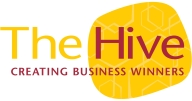Thank you to Sean Macaskill for writing a blog for us about crowd funding, a relatively new phenomenon but one that is starting to gain a lot of attention…
Generally (there are exceptions) the way crowd funding works is that you generate small amounts money from a large number of independent backers to fund your idea/product/business. In return the backers get product (when it’s been made), acknowledgement (for example credits in a music album sleeve), or a stake in the business. Your project is ‘live’ on a web portal and normally has a time frame attached to it to raise funds to a pre-set target. If you don’t meet the target in the time frame, any money already pledged simply goes back to the would-be investors.
I think the first of these two methods can and does work well. However, I am unsure of the viability/legal repercussions of having a large bunch of strangers, with small stakes each, having part ownership of your business – to me, it has ‘difficulties’ written all over it, but that’s just my opinion.
 It’s too early to tell how this new method of funding will develop, but from what I have seen so far, it appears to work most effectively when funding is sought for the advance purchase of a product.
It’s too early to tell how this new method of funding will develop, but from what I have seen so far, it appears to work most effectively when funding is sought for the advance purchase of a product.
The best known example is the Pebble Smart Watch, which raised funding through Kickstarter. It generated over $10,000,000 dollars and was the first project to break the $1,000,000 dollar level.
Interestingly, Kickstarter has really useful statistics break downs… As this is an Art and Design blog, many of the most successful projects fall within this definition; the most historically successful funded categories are Theatre (64%) and Dance (69%). There’s a caveat here though, in that generally it’s smaller amounts of investment that have been secured.
Google ‘crowd funding’ and you can see how many businesses there are in this space now. I am currently working with a business that will be launching a crowd funding project soon – I’ll post again when it’s live.
 I use crowd funding sites for research too. There are many projects that were unsuccessful in this process that said that this was the most useful process in refining their ‘offer’ and actually stopped them making an expensive mistake with an offer that wasn’t quite right for the market. To this end, crowd funding can be a good evaluation tool as well. It’s also interesting to look at the trends in successful projects and may help you to generate your own ideas.
I use crowd funding sites for research too. There are many projects that were unsuccessful in this process that said that this was the most useful process in refining their ‘offer’ and actually stopped them making an expensive mistake with an offer that wasn’t quite right for the market. To this end, crowd funding can be a good evaluation tool as well. It’s also interesting to look at the trends in successful projects and may help you to generate your own ideas.
About the author: Sean Macaskill is an Enterprise Adviser at The Hive, Nottingham Trent University’s Enterprise and Enterpreneurship Unit. For further information, check The Hive website or send Sean an email.
